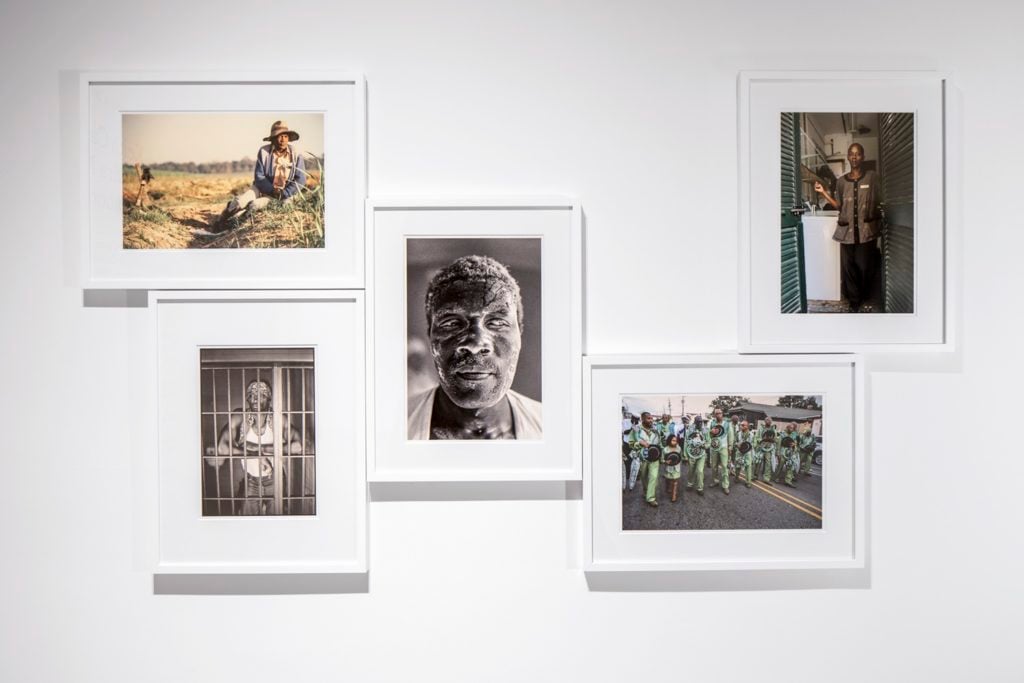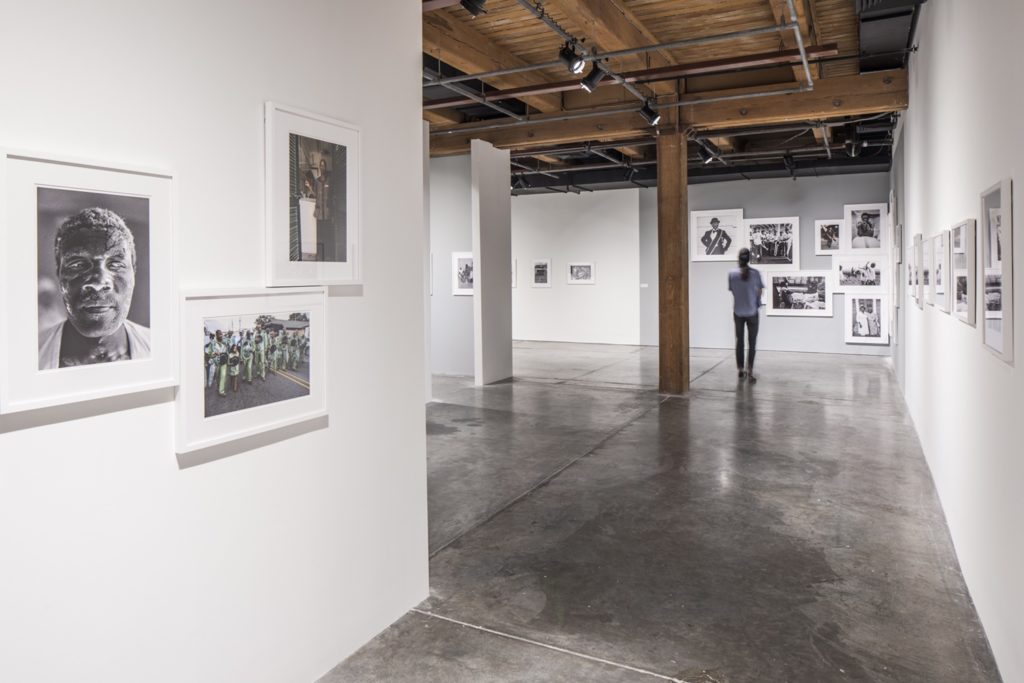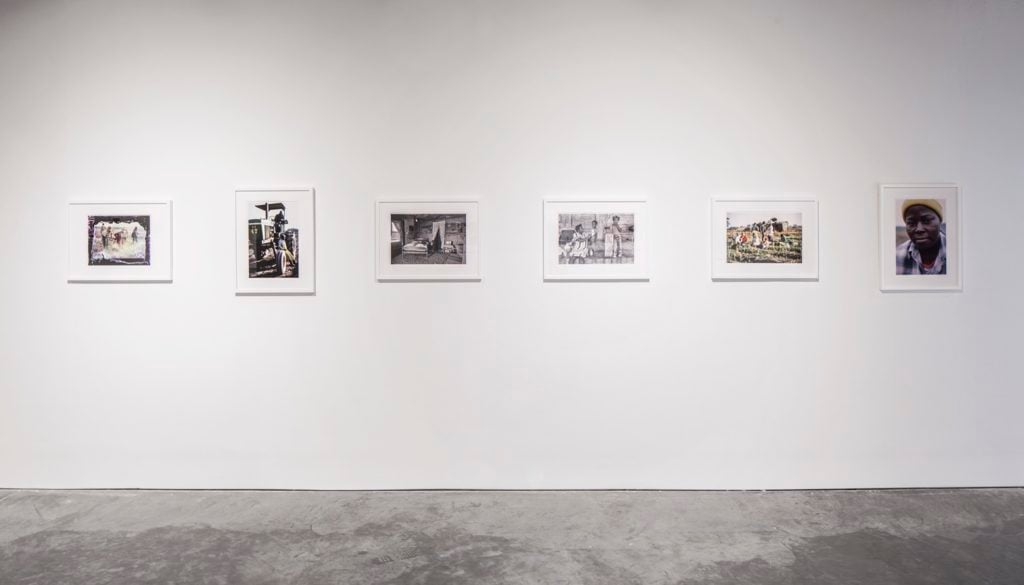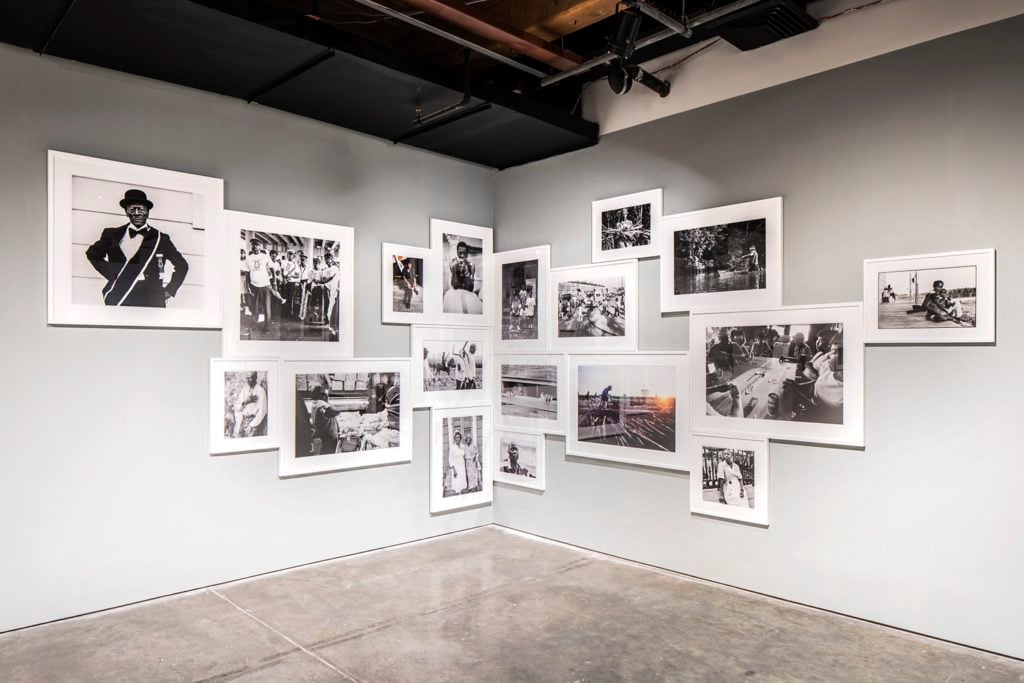Reviews
Why Keith Calhoun and Chandra McCormick’s ‘Labor Studies’ Is One of the Best Shows I’ve Seen in a Long Time
Deeply rooted in the city, Calhoun and McCormick reveal an ever-changing landscape full of joys and injustices.

Deeply rooted in the city, Calhoun and McCormick reveal an ever-changing landscape full of joys and injustices.

Ben Davis

Here’s some unfinished business from 2018, before we get too distant from it: One of the most affecting shows I saw all year was “Labor Studies” by Keith Calhoun and Chandra McCormick at the Contemporary Art Center in New Orleans.
Calhoun (b. 1955) and McCormick (b. 1957) are not exactly obscure. They won an Art Matters grant for socially engaged art in 2018. Curator Okwui Enwezor included their most highly regarded series, “Slavery, The Prison Industrial Complex,” in his 2015 Venice Biennale, and selections from that series were also the Frist Art Museum in Nashville and at Mark Bradford’s Art + Practice space in Los Angeles.
These photos of the infamous “plantation-prison” of Angola—which unmistakably resemble slave life, with depictions of rifle-toting overseers on horseback, watching over black inmates in the fields—pack a terrible punch. They chime with the contemporary awareness of the racist underpinnings of the prison industrial complex captured by Michelle Alexander’s book The New Jim Crow and Ava DuVernay’s documentary 13th.
So it makes sense that these images have found an audience at this particular moment. But Calhoun and McCormick’s significance stretches beyond that series. They are very much New Orleans artists, rooted in the Ninth Ward, and this career survey gives a sense of the decades of work they have put into documenting the changing face of work and life in Louisiana.

An installation view of “Keith Calhoun and Chandra McCormick: Labor Studies” at the Contemporary Arts Center, New Orleans, 2018. Photo: Alex Marks.
New Orleans is so caked in myth that it’s easy to see it as timeless. But it has a history, and “Labor Studies” captures the city’s shifts over time. The photo series of workers heaving bags at the docks, for instance, gives a view into a world that has a different center of gravity than the leisure-focused economy of today. (Calhoun’s father was a dock worker.)
Curator Andrea Andersson has smartly broken the show into clusters, each dwelling on one place that the artists have documented in depth: the sugar cane fields, the docks, behind the scenes with restaurant and domestic care workers, in the streets with musicians during parades and jazz funerals, and, of course, Angola, including the notorious Angola Prison Rodeo, where inmates compete as riders and staff the concessions.
As black artists rooted in the black community, Calhoun and McCormick have paid special attention to black life—but they have also made a point of documenting the city’s shifting labor force, as an influx of immigrants from Latin America and Asia has flocked to New Orleans in the past decade. The most recent photo in “Labor Studies” is a shot of a café worker—a Vietnamese immigrant, I am told—bent over a table at a French Quarter cafe, absorbed in the task of clearing away the remains of someone’s beignet brunch.
What comes through also is the aching scar left by Hurricane Katrina, which killed more than 1,800 people and displaced hundreds of thousands of others, disproportionately hurting the poorest. Calhoun and McCormick themselves were briefly exiled to Houston, and the hurricane left a lasting mark on their work—literally, because their studio was flooded, soaking vast quantities of negatives. Printed out, the warped and stained prints transform the couple’s documentary images into unintentionally poignant abstractions, or semi-abstractions.
Andersson dots one example of these Katrina-affected prints into each of the various sub-sections of the show as punctuation marks: A close-up of a man’s face, the top half cut off by the whorls of the ravaged film; an image of workers in the field, floating like a fragment in a sea of cracked black, and so on. Smartly, the show doesn’t overemphasize this accidental body of work, the pathos of which is somewhat of a tangent. Still, the Katrina photos are undeniably moving as markers of an artistic connection to New Orleans so intimate that when the city bled, the duo’s work bled as well.

An installation view of “Keith Calhoun and Chandra McCormick: Labor Studies” at the Contemporary Arts Center, New Orleans, 2018. Photo: Alex Marks.
Calhoun and McCormick’s style can be very beautiful, but it is also distinctly anti-spectacular. Almost universally, there’s a sense of even-keeled intimacy, as they capture their subjects holding the tools of their trade or lost in toil in the landscape. Formal concerns emerge on top of this sense of familiarity and ordinariness. This sensibility holds true even of the Angola prison photos, which generally capture the texture of everyday prison life, not its most brutal extremes.
When you let it steep, this atmosphere actually makes the prison photos cut a little deeper: these afternoons of forced labor, the diversions of the prison rodeo, and the birthdays and funerals behind bars are not exceptional but routine, part of the ordinary infrastructure of American life. The scandal is its ordinariness.
In general, Calhoun and McCormick’s defining characteristic, and what makes them special as artists, is the exceptional degree to which they emphasize the “community” part of community-engaged art. They are completely committed to Louisiana. The fact that they actually know and remain close to many of their subjects is part of their legend.

An installation view of “Keith Calhoun and Chandra McCormick: Labor Studies” at the Contemporary Arts Center, New Orleans, 2018. Photo: Alex Marks.
There is, however, a counter-intuitive side effect of this emphasis, which is the relative de-emphasis of the “art” part of community-engaged art, by which I mean, partly, that they don’t seem too concerned with the finer points of artistic authorship. They often have no records for, or cannot agree on, which of the two have taken which photos. (The Angola photos are all by Calhoun, for the simple reason that it is a men’s prison.) One corner of the show, where a cluster of photos known to be by McCormick faces another cluster of photos by Calhoun, throws the fusional indistinction of the rest of the show into relief.
The same relative lack of concern is true of how the pair have archived their decades of documentary work: many of the dates are approximate, and the stories behind them are known mainly, I gather, from the memories of the artists.
Someday, I do hope that the details of the Calhoun/McCormick archive can be systematically indexed. The scars of the Katrina prints are a reminder of how fragile the record is.
But you can also say that the artists’ relative indifference to record-keeping reflects how fully tied they are to a philosophy of community: What matters most in their work has been the context of being organically rooted in a place, and the truth of that place is felt to be anchored in the living relationships that give it meaning, not just its record.
You can take “Labor Studies” as a reminder of that truth, in one’s own life as well as in the life of New Orleans.
“Keith Calhoun and Chandra McCormick: Labor Studies” is on view at the Contemporary Art Center New Orleans, through February 10, 2019.